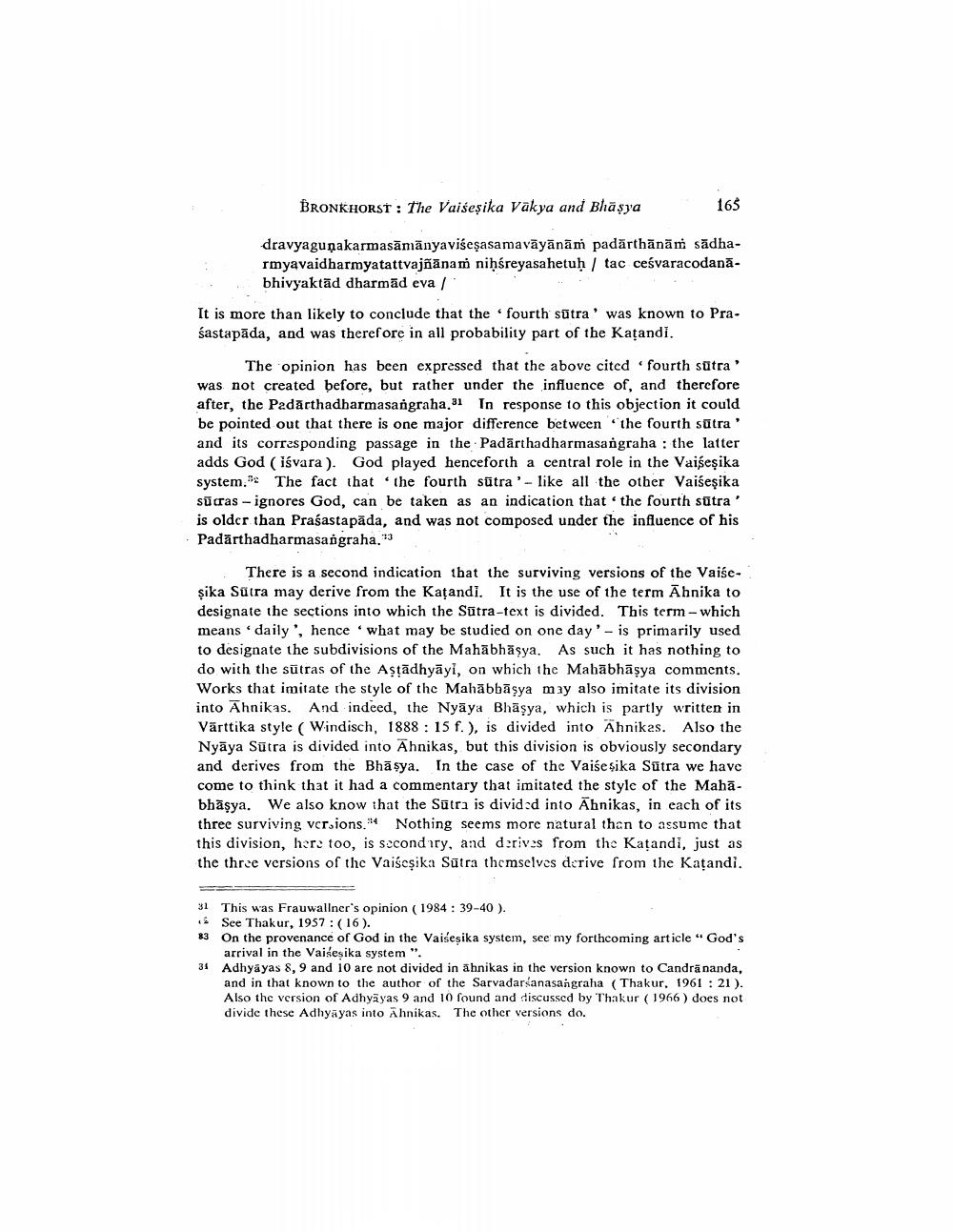________________
BRONKHORST: The Vaiseṣika Vakya and Bhāṣya
165
dravyagunakarmasāmanyaviseṣasamaväyānām padarthānām sādharmyavaidharmyatattvajñānam niḥśreyasahetuḥ / tac ceśvaracodanabhivyaktad dharmad eva /
It is more than likely to conclude that the fourth sutra' was known to Prasastapāda, and was therefore in all probability part of the Kațandi.
The opinion has been expressed that the above cited fourth sūtra' was not created before, but rather under the influence of, and therefore after, the Padarthadharmasangraha.31 In response to this objection it could be pointed out that there is one major difference between the fourth sutra ' and its corresponding passage in the Padarthadharmasangraha: the latter adds God (iśvara). God played henceforth a central role in the Vaiseṣika system. The fact that the fourth sūtra' - like all the other Vaiseşika sutras - ignores God, can be taken as an indication that the fourth sūtra' is older than Prasastapāda, and was not composed under the influence of his Padarthadharmasangraha. 33
There is a second indication that the surviving versions of the Vaiseşika Sutra may derive from the Kațandi. It is the use of the term Āhnika to designate the sections into which the Sūtra-text is divided. This term - which means daily, hence what may be studied on one day' is primarily used to designate the subdivisions of the Mahabhāṣya. As such it has nothing to do with the sutras of the Aṣṭādhyāyi, on which the Mahābhāṣya comments. Works that imitate the style of the Mahabbaṣya may also imitate its division into Ahnikas. And indeed, the Nyaya Bhasya, which is partly written in Värttika style (Windisch, 1888: 15 f.), is divided into Ahnikas. Also the Nyaya Sūtra is divided into Ahnikas, but this division is obviously secondary and derives from the Bhāṣya. In the case of the Vaiśesika Sutra we have come to think that it had a commentary that imitated the style of the Mahābhāṣya. We also know that the Sutra is divided into Ahnikas, in each of its three surviving versions. Nothing seems more natural than to assume that this division, here too, is secondary, and derives from the Kațandi, just as the three versions of the Vaiścşika Sutra themselves derive from the Kaṭandi.
31 This was Frauwallner's opinion (1984: 39-40).
See Thakur, 1957: (16).
83 On the provenance of God in the Vaiseṣika system, see my forthcoming article "God's arrival in the Vaiseṣika system ".
31 Adhyayas 8, 9 and 10 are not divided in ähnikas in the version known to Candrānanda, and in that known to the author of the Sarvadarśanasangraha (Thakur, 1961: 21). Also the version of Adhyayas 9 and 10 found and discussed by Thakur (1966) does not divide these Adhyayas into Ahnikas. The other versions do.




